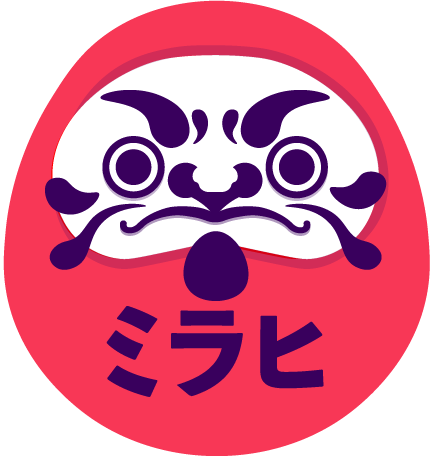Mirahi's journey to ISO 9001:2015 certification

1. Intro
Mirahi offers software development, consultancy and computer education services. Providing services is a difficult concern and wanting to express their quality is an even more difficult move. It is necessary to be able to monitor all the inherent assets in each service and determine their qualities. The sum of these different properties will determine the final quality of a service.
• But what if we have several services? With interconnections between them and their inputs (resources, processes, knowledge, finance, capacities.)? Or no connection at all?
• How are we going to catalog all of our company's processes?
• How important are they compared to others?
• How will we define and measure the quality?
• How to maintain this quality?
• How do we communicate our vision internally and externally?
• How to remain impartial?
• How much does it cost to display your quality criteria?
• Can we do it alone?
• Where do we start?
At Mirahi, the first step to answer all these questions was simple:
We need to follow a standard with operational processes applied and validated by the best in any sectors of activity. The ISO-9001 standard appears to be the best and most widely used standard in any industry.
So we were going to get The ISO 9001:2015 certification !!
• But where do we start?
• What is ISO-9001: 2015?
2. Preparation :
1. First of all, we had to define what we were looking for.
Quality :
According to Larousse dictionary, Quality is a set of characters, properties that make something correspond well or badly to its nature, to what it is expected to do/ produce/supply.
In a more organizational way, we have defined it this way at Mirahi:
Quality is the set of properties of an organization that give the ability to satisfy most of all customers' needs. All the needs must be expressed in a measurable criteria and/or characteristics. The initial measure will be key to position ourselves and be able to improve the quality of the services provided by the company.
2. Which tool we were going to use ?
ISO 9001-2015:
The ISO 9001:2015 standard defines requirements for the establishment of a "quality management system" for organizations wishing to continuously improve customer satisfaction and provide compliant products and services. The ISO 9001 standard is intended for all organizations, regardless of their size and sector of activity. It is part of the ISO 9000 series of standards (ISO 9000, ISO 9001 and ISO 9004).
3. Why we want to do it ?
The certification will give us a competitive advantage and recognition of the quality of our services. Being a very young company, it gives us the opportunity to define a quality policy and write certain verbal or non-existent processes, but also ensure that the services we offer correspond to the highest independent standards
3. Roadmap to ISO 90001 : 2015 Solution :
1. Define available and needed resources
First of all, we had to determine all resources to put in place for the quality management, we opted for the provision of a Quality team including :
- 1 Quality Manager
- With the support of 3 managers.
We also opted for the help of a consultant for the pre-audit. This phase is necessary if you don’t plan to be helped by an external consultant.
2. Master the standard
The standard is available here and it is essential to acquire the basics of the standard.
But it doesn't tell you where to start!
Mixing the learning sources below seemed the most relevant for us.
a. Books :
Various books with different methods and points of view explain the ISO-9001 methodology to you, do not hesitate to get one to remove all myth of the certification.
- Au cœur d’iso 9001 : 2015 (french)
- ISO 9001 : 2015 for everyday Operations
- Implementing ISO 9001 :2015
b. Accreditation institutions:
Different ISO accreditation institutions inform you of their methodologies and the different changes in the standard. A lot of information can be collected on their website and with a simple price offer:
c. Emulation:
By searching (a lot!!) we found documents used by other companies to comply with the standard. One of them is called " the Quality Manual",
A Quality Manual : is a document that describes the quality management system of an organization and shows how the Quality Management System should operate. Quality manuals may vary in format and detail, in order to fit the scope and complexity of your organization.
These used documents will give you a slightly clear direction of what the ISO-9001: 2015 Standard expects from you , Use them as example to produce your owns.
NB: The quality manuals is not anymore a mandatory documents to pass the ISO-9001:2013 accreditation.
d. Checklist:
Checklists and different compliance matrices are available on the Web, you can even buy some (here).
• Gap analysis
• Documents required for certification
• Internal Review
• Internal audit
e. External consultant and their sites:
External consultants will give you plenty of information, do not hesitate to contact them and have them demonstrate their methods to you, either they will inspire you or you will hire them to do the job.
Please note that the average cost of a consultant is 1000 €/day and you will need 4 to 11 days for a small company like Mirahi (15 people).
f. ISO 9001:2015 training site and E-learning:
These sites are a wealth of information. Some of them allow you to have a "Lead Auditor" certificate for a few hours of online training. This method can save you 3 days of onsite training and spread your learning according to your availability.
NB: The competence of Lead Auditor is necessary in order to carry out an internal audit of your Quality Management System (QMS). In addition, the standard requires having a certain level of knowledge (hour of training course, certification, etc.) without clearly mentioning what level.
3. Involve management and employees
It is absolutely necessary that the management support the quality approach of the certification, this will allow a faster assimilation of the QMS and bring this approach more assertively to all employees.
4. Conduct a thorough analysis of the existing processes
It is essential to analyze what already exists in order to formalize the processes, procedures and documents.
For this we have created:
- A SWOT analysis of the company, as well as a complete mapping of the various stakeholders without forgetting the internal collaborators!
- A list of internal documents with a specific nomenclature to each document and departments
- A map with all procedures and processes (production and support).
Mirahi Process Interaction Matrix
- A “Gap Analysis” is al so mandatory to locate ourselves in our ISO approach and answer the question “where we are”.
5. Define objectives
Following the elements of the previous point, it was easy for us to define specific objectives using the SMART method (Specific, Measurable, Acceptable, Realistic, time-bound.
6. Establish the QMS (Quality Management System):
The QMS or Quality management System is a quality management system for all the activities by which an organization defines, implements and reviews its own quality policy and objectives in accordance with its strategy. An organization's QMS is made up of interrelated and interacting processes that use resources to achieve intended results and deliver quality value (product, service, etc.).
The QMS is necessary for the control and improvement of the various processes of an organization, thus allowing the continuous improvement of its results and its performances.
For Mirahi the QMS includes the following elements:
a. The Quality Manual
This document is not recommended by the standard but it seemed essential to us because it very clearly defines the Mirahi approach aligned with the standard. It's kind of the Mirahi recipe book with the different ingredients.
b. Quality policy
Summary of our Quality approach which must be disseminated to our customers and our employees
c. Supplier audit: the audit of all suppliers
d. The Risk Register: advanced risk analysis
e. SMART goals
f. The list of processes
g. The internal audit:at least one internal audit before the certification
As well as their evaluations according to specific KPIs (key performance indicator) determined in the definition of objectives.
7. Conduct Management Review (template)
The Management Review is a high-level assessment of the QMS (assessment of services, processes, documents, skills, etc.). It is intended to give concrete elements to the manager so they can decide and change on the general quality of the services offered.
It is translated in the form of documents or software containing the quality objectives and all other elements inherent to quality. With this document, the management will be able to judge the relevance of the “Quality Management System.” There must be at least one management review carried out before the audit (it’s mandatory). Each management review must be the subject of a conclusion in order to affirm that all the elements which constitute it reach the expected level of quality and otherwise be the source of change and corrections.
8. Internal Audit
Internal audit is an essential and critical element to the success of the certification! At this stage it will be necessary to demonstrate that each component meets the standard.
**Caution**: do not mix up the management review which will check that the different elements of the QMS correspond to the objectives. While the internal audit checks that its elements comply with the corresponding chapters of the standard.
The result of this audit have to lead if necessary to modifications and/or changes in order to comply with the ISO 9001: 2015 standard.
9. Verification
Pre-audit: the pre-audit allows you to consolidate your QMS if you do not have the necessary skills, this step is key to the success of the project.
Do not hesitate to take a Lead Auditor training at a lower cost which will also strengthen your skills.
Do not hesitate to compare your QMS with compliance checklists.
4. Certification Time Frame
Following your level of knowledge, your tools and resources the certification can take between 3 to 12 months. Not to mention the availability of an approved auditor. We spent an entire year completing our ISO 9001:2015 journey.
Source : ( Bureau Veritas Certification)
V. Conclusion:
There are a lot of books, checklist articles and , software allowing you to be directly compliant with the Standard!
Do not minimize the cost of the entire certification process :
Cost overview :

These cost may change following the size of our organization
Do not reinvent the wheel, but do not hesitate to build your own tools or adapt the templates. ISO 9001:2015 seems prohibitive at the beginning because it requires a lot of documentation and requires clearly responding to standards and chapters. But with time and some perseverance the exercise can be a success story for your business !
The ISO 9001:2013 journey has allowed Mirahi to consolidate its own processes and to have a clear and structured documentation register. The fact that almost all processes are now written and that the whole team can rely on that to do their own work makes us gain added value in our overall quality and stability of operation.
References & useful links:
https://www.iso.org/standard/62085.html
https://en.wikipedia.org/wiki/Quality_(business)
https://en.wikipedia.org/wiki/ISO_9000
https://the9000store.com/articles/iso-9000-tips-what-is-a-quality-manual/
https://www.thecoresolution.com/4-2-2-quality-manual-iso-explained-2020-update#:~:text=A%20quality%20manual%20is%20a,your%20customers'%20and%20ISO's%20requirements.
https://certification.bureauveritas.com/get-certified/your-path-certification/your-certification-process
https://www.iso-9001-checklist.co.uk/iso-9001-requirements.htm
https://en.wikipedia.org/wiki/SWOT_analysis
